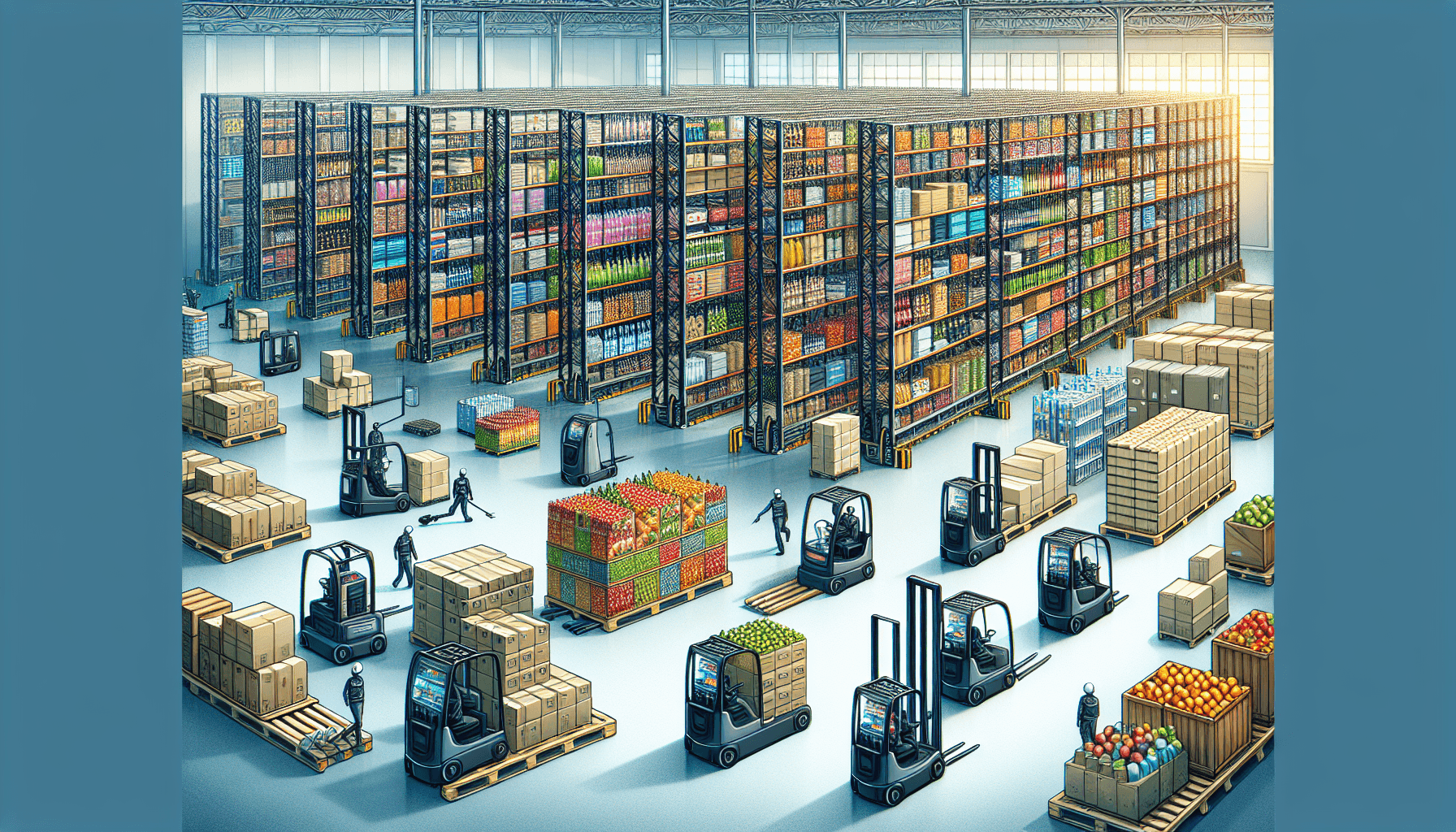Did you know that the adoption of Automated Guided Vehicles (AGVs) is revolutionizing the way food and beverage warehouses operate? AGVs are robotic vehicles that can autonomously navigate through warehouse settings, carrying out various material handling tasks. They have become increasingly popular in recent years due to their ability to enhance safety, efficiency, and cost-effectiveness within warehouse operations.
The Advantages of AGV Deployment in Food and Beverage Warehouses
1. Increased Productivity:
AGVs are designed to work around the clock, tirelessly performing repetitive tasks within the warehouse. By automating material handling processes such as picking, packing, and transportation, AGVs significantly increase productivity and eliminate the risk of human error. They can consistently and accurately move goods throughout the warehouse, reducing the time spent on manual tasks and allowing employees to focus on more complex duties.
2. Enhanced Safety:
Safety is a top priority in any warehouse setting, especially in the food and beverage industry where there are strict regulations and protocols to follow. AGVs help improve warehouse safety by reducing the number of accidents caused by human error, such as collisions, slips, and falls. These robotic vehicles are equipped with advanced sensors and cameras, allowing them to detect obstacles and navigate around them, ensuring a safe working environment for employees.
3. Optimal Space Utilization:
One of the key challenges in warehouse operations is space utilization. AGVs are designed to be compact and efficient, allowing them to maneuver through narrow aisles and tight spaces. By utilizing AGVs, food and beverage warehouses can optimize their storage capacity and make the most of the available space. This not only improves efficiency but also reduces the need for additional warehouse expansion, leading to significant cost savings.
4. Improved Inventory Management:
Inventory accuracy is vital in the food and beverage industry to ensure timely order fulfillment and prevent food waste. AGVs can be integrated with warehouse management systems (WMS) and inventory control software, providing real-time visibility of inventory levels and locations. This allows for better inventory tracking, reducing the risk of stockouts or overstocking. AGVs can also perform cycle counting and physical inventory audits with precision and efficiency.
5. Cost Savings:
Implementing AGVs in food and beverage warehouses can lead to significant cost savings in various ways. By minimizing labor-intensive tasks, companies can reduce labor costs and optimize workforce allocation. AGVs also eliminate the need for additional equipment, such as forklifts or conveyors, reducing maintenance and operational expenses. Furthermore, improved space utilization and inventory management result in reduced storage costs and less risk of inventory obsolescence.
6. Scalability and Adaptability:
AGVs offer scalability and adaptability, allowing food and beverage warehouses to adjust to changing business needs and market demands. These robotic vehicles can be easily programmed and reprogrammed to accommodate process changes, inventory reconfigurations, or layout modifications. Whether it’s an increase in order volume or the introduction of new products, AGVs can seamlessly integrate into existing workflows and adapt to evolving warehouse requirements.
7. Sustainability:
With a growing focus on sustainability, AGVs present an eco-friendly solution for food and beverage warehouses. AGVs are powered by electric batteries, which significantly reduce carbon emissions compared to traditional fuel-powered machinery. By deploying AGVs, companies can contribute to a greener environment while minimizing their carbon footprint and maintaining compliance with sustainability initiatives.
Conclusion:
As the food and beverage industry continues to evolve and face new challenges, the deployment of AGVs in warehouses proves to be a game-changer. The benefits of AGV deployment, including increased productivity, enhanced safety, optimal space utilization, improved inventory management, cost savings, scalability, adaptability, and sustainability, make it a valuable investment for any food and beverage warehouse looking to stay competitive in today’s rapidly changing market.
If you would like to learn more about AGV deployment for food and beverage warehouses, please visit HCO Innovations.

